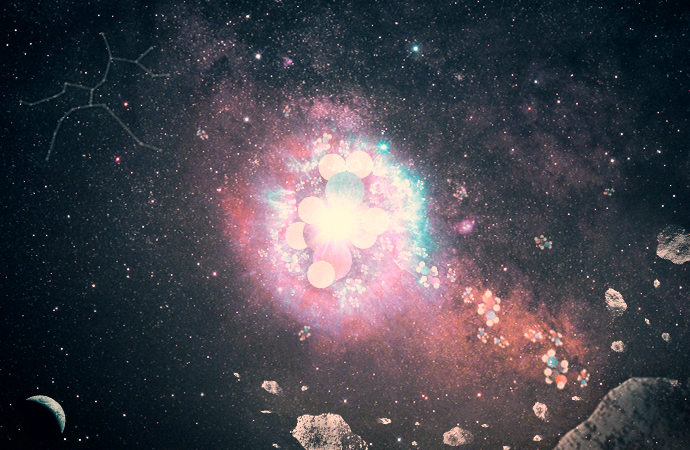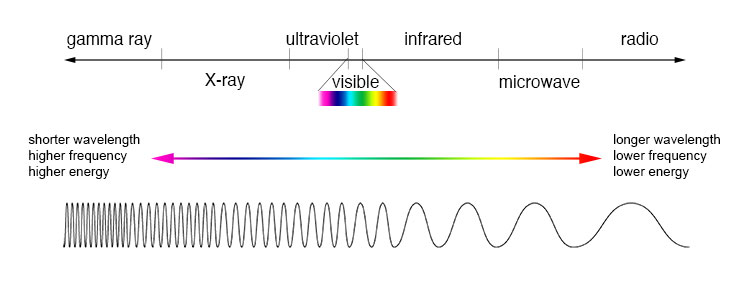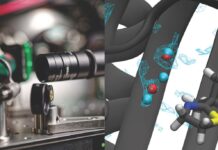The development of the cell membrane was a milestone in the success of life on Earth. A cell membrane is a wall that protects genetic material and other essential components in the cell and helps regulate metabolism.
The current cell membrane has a peculiar bilayer structure with millions of fatty molecules bound in pairs —resembling legs— attached to a water-friendly head. The heads are not unique; diverse molecules play that role. A frequently found is ethanolamine (H2N-CH2-CH2-OH), which is made out of ethanol, yes, the one you drink in spirits! And an amino molecule, yes, the one in amino acids. Ethanolamine is present in many species, particularly in every cell in humans. The cell membrane also has proteins creating channels deciding what comes in and out of the cell.
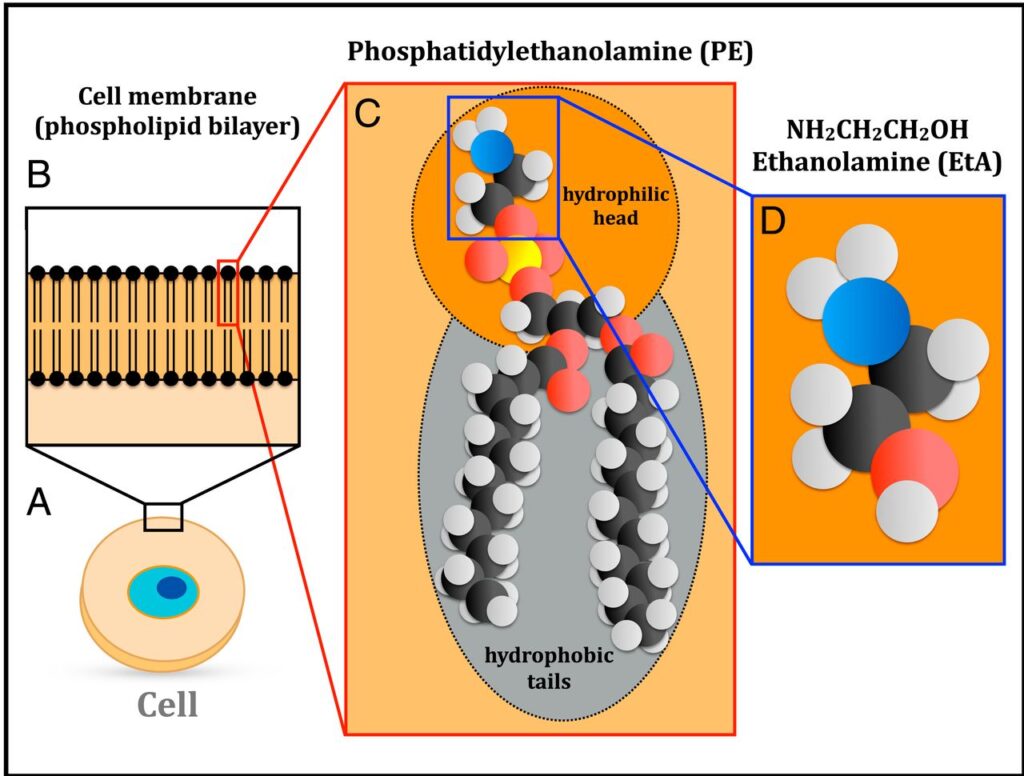
In an article published on the 24th of May in the Proceedings of the National Academy of Science, Víctor Rivilla and collaborators reported that they have detected ethanolamine (H2N-CH2-CH2-OH) in the center of our galaxy.
Why is this finding so significant?
Astronomers have detected ethanolamine in meteorites in the past, which supports the hypothesis that these molecules of life could have been synthesized on asteroids and planets.
Now, for the first time, Rivilla and collaborators have found ethanolamine in a dense molecular cloud in space. According to the authors, the chemistry surrounding the ethanolamine revealed that it could have formed right there, in space.
Molecules of life in a far, far away side of the galaxy
Victor Rivilla and collaborators observed the ethanolamine in the giant dust and gas cloud Sagittarius B, located 27 thousand light-years from Earth and 390 light-years from the center of the Milky Way —a cloud known to be a reservoir of many other organic molecules.
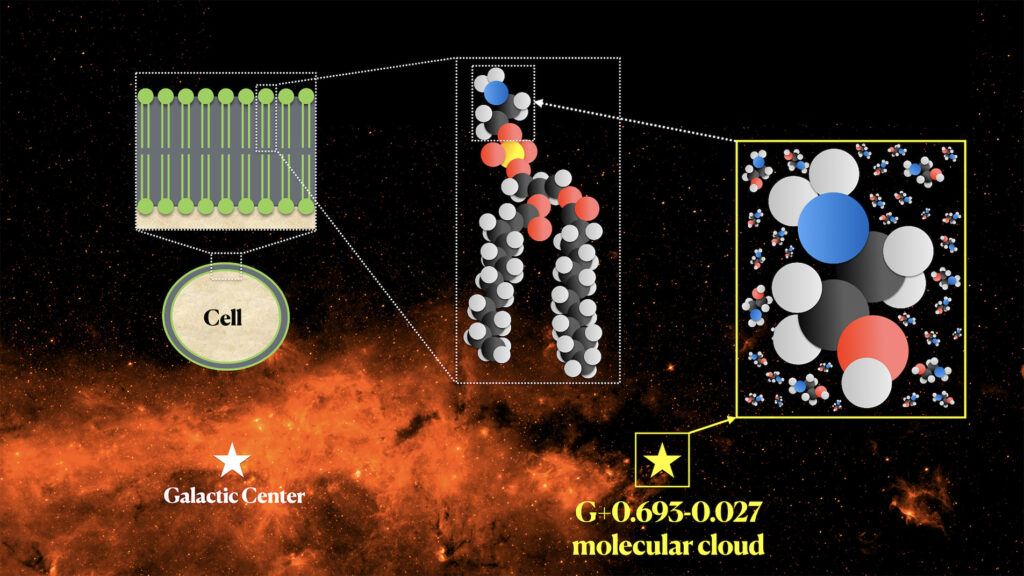
“Our group has been observing this source, the molecular cloud G+0.693-0.027, for many years, at least from 2006, even before I started my PhD!” Dr. Rivilla said and added: “We searched for it because of its relevance for prebiotic chemistry, since it is a piece of phospholipids, which are the builders of cellular membranes. And because, based on our previous experience detecting organic molecules in space, it was a good potential candidate to be detected.”
For their observations, the authors used the two largest radio telescopes available in Spain: The Yebes 40-m radio telescope in Guadalajara, and the IRAM 30-m telescope in Granada. Both work with radio waves.
How do astronomers see molecules in space? When light interacts with an atom or a molecule, the decomposed light in “colors” forms a unique pattern, a fingerprint. This is how astronomers find out the compositions of any celestial body in the visible universe. “We knew it was a challenge, indeed this is the largest molecule with hydrogen, nitrogen, oxygen and carbon (four chemical elements needed for life) detected so far in the interstellar medium.” Dr. Rivilla explained with enthusiasm.
This discovery helps shed light on the origin of life and possible occurrences of life in other places of the universe.
If these building blocks of life came from interstellar space into a very young solar system, it could have played a relevant role in the apparition and success of life on Earth. And who knows? On other planets.
References
Victor M. Rivilla, Izaskun Jiménez-Serra, Jesús Martín-Pintado, Carlos Briones, Lucas F. Rodríguez-Almeida, Fernando Rico-Villas, Belén Tercero, Shaoshan Zeng, Laura Colzi, Pablo de Vicente, Sergio Martín, Miguel A. Requena-Torres. (2021). Discovery in space of ethanolamine, the simplest phospholipid head group. Proceedings of the National Academy of Sciences 118 (22) e2101314118; DOI: 10.1073/pnas.2101314118.
Scientists interviewed
Dr. Victor M. Rivilla, research scientist at Centro de Astrobiología, Consejo Superior de Investigaciones Científicas–Instituto Nacional de Técnica Aeroespacial “Esteban Terradas”, 28850 Madrid, Spain and Osservatorio Astrofisico di Arcetri, Istituto Nazionale di Astrofisica, 50125 Florence, Italy.
Illustration by Dana Dumena.
